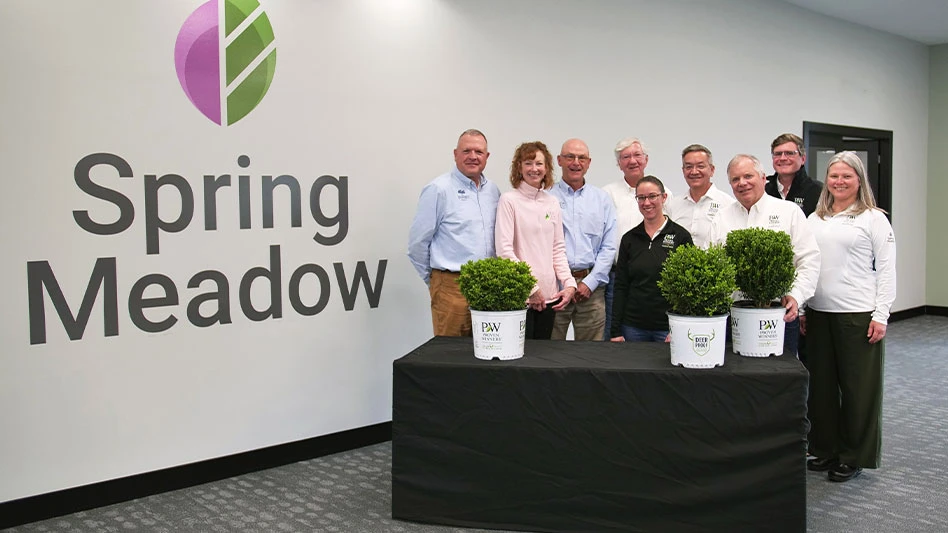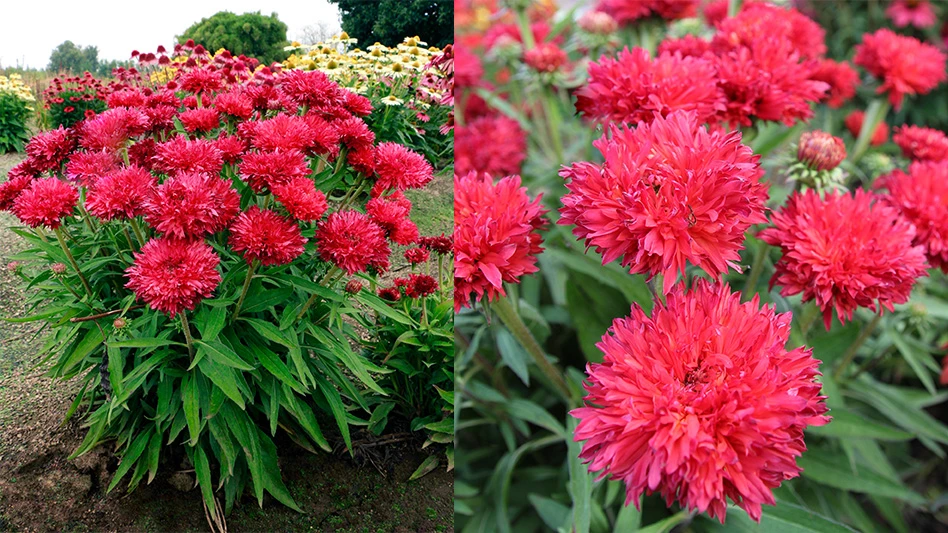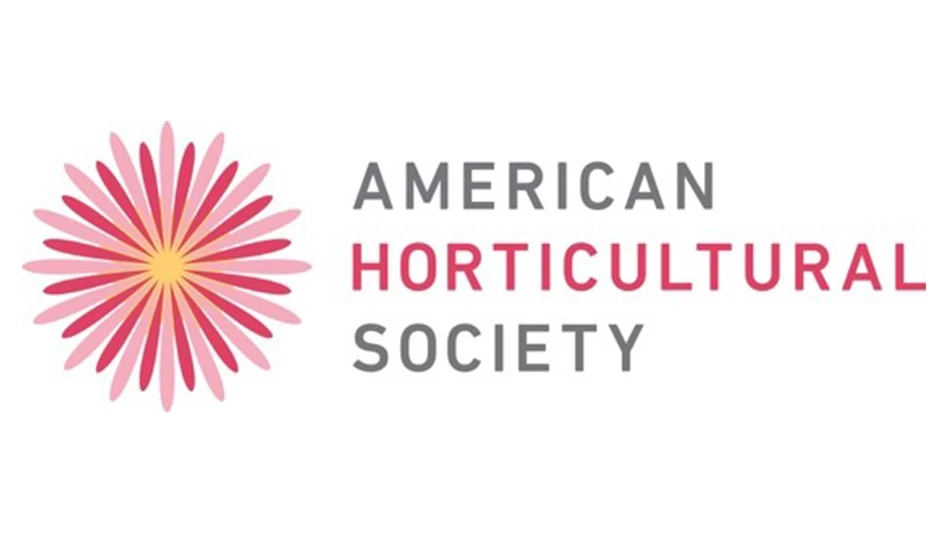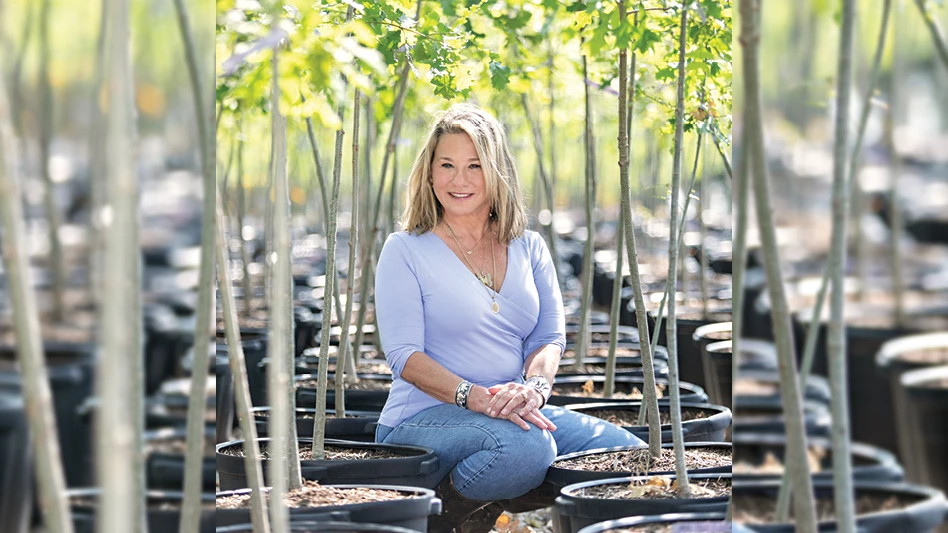
Phosphorus runoff, including that from container-grown nursery crops, can be harmful to water quality. Because of this, researchers are looking into ways nurseries can keep phosphorus where it belongs — in the pots. Jacob Shreckhise of the USDA’s Agricultural Research Service has been looking into this problem.
"Specialty crops, including ornamental plants, small fruits and fruit trees, may spend all or a part of their life in a pot or container," Shreckhise says. "Growing plants in containers saves space, helps with shipping and handling, and requires no arable land. These containers are usually filled with peat or bark instead of soil. Because peat and bark provide very little nutrients, plants are given fertilizer that release nutrients slowly over time."
However, little research has previously been done to determine what additions to the peat or bark might help keep the phosphorus in the containers. To help answer this question, he and other researchers performed a laboratory study on pine bark-based potting medium and two ingredients nurseries often add to it: dolomite and micronutrient fertilizer.
"It's important to remember that the growing media used to produce nursery crops in containers is totally different than the field soils other crops are grown in," says Shreckhise. "Bark and peat-based growing media can't stop the phosphorus from moving around as easily. So, it's free to drain from the containers when they are watered. That's what we are trying to prevent."
For their lab experiment, Shreckhise and his team filled columns with the potting material, a fertilizer and ingredients thought to help with keeping phosphorus around. Then, they watered the columns and collected the drainage water to analyze.

lumber industry, is the basis of most
growing media used to grow shrubs
and trees in containers.
agronomy.org Photos by Jacob Shreckhise
and Alex Niemiera
They found that the two additives, dolomite and micronutrient fertilizer, reduce the concentrations of a particular form of phosphorus by an average of 70%.
The additives work because of complex chemistry. Phosphate, a form of phosphorus that plants can use, has a negative charge. This means it likes to stick to things with a positive charge, such as dolomite and micronutrient fertilizer. In addition to improving plant growth, this research shows that these amendments help keep phosphorus in the pot.
Shreckhise and his team also studied how long dolomite and micronutrient fertilizers help to retain phosphorus in containers. Their next step is seeing if that retained phosphorus is in a form that plants can use.
Phosphorus runoff is becoming a bigger and bigger problem for the environment. Farms, including nurseries, must continue to combat it. "This research shows that we should continue exploring the use of amendments to help reduce the phosphorus that washes away from the containerized plants," he says.
"This research was just the first step toward understanding the phosphorus chemistry occurring in these pots," he adds. "Since plants were not involved in this study, we cannot make specific recommendations to growers based solely on this research. The general public should know that nursery growers routinely add these amendments to the potting medium. This is a step in the right direction to keeping the green industry 'green.'"
For more: ARS Application Technology Research, ars.usda.gov/midwest-area/wooster-oh/application-technology-research
Get curated news on YOUR industry.
Enter your email to receive our newsletters.
Explore the May 2020 Issue
Check out more from this issue and find your next story to read.
Latest from Nursery Management
- The HC Companies, Classic Home & Garden merge as Growscape
- Eason Horticultural Resources will now officially be known as EHR
- BioWorks receives EPA approval for new biological insecticide for thrips, aphids, whiteflies
- Ellen Mackenbach-Lakeman appointed new CEO of Dümmen Orange
- Southern Garden Tour sets 2025 dates for trial garden open houses
- New book explores plants that thrive in Rocky Mountains
- American Floral Endowment establishes Herman Meinders Memorial Tribute
- These companies are utilizing plastic alternatives to reduce horticultural waste





